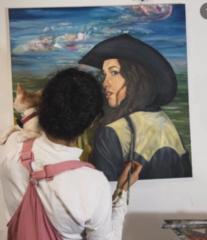Activity
Mon
Wed
Fri
Sun
Jan
Feb
Mar
Apr
May
Jun
Jul
Aug
Sep
Oct
Nov
Dec
What is this?
Less
More
Memberships
KJ
Katie Jarman Art Studio
99 members • Free
Art With Courage
81 members • $5/month
Painters Hub
6.4k members • Free
Paint Better Together
71 members • Free
Serge Ramelli Easy Tutorials
1.6k members • Free
Master Realism Drawing (Free)
1.3k members • Free
Di-Maccio Art Academy
4.1k members • Free
Society of Figurative Art
483 members • Free
28 contributions to Paint Better Together
How would you approach this?
I have a photograph of a waterfall I took at Yosemite back in 2016, and I’m planning to paint it in oil using four square panels that will be assembled into one frame. I’d like the colors to be as rich and chromatic — or as close to the photograph — as possible. How would you approach the glazing process to achieve that effect? The photo was shot with a full-frame camera, so I have plenty of resolution to zoom in on details though I know I won’t need it because the size will only be 8” x 8” roughly. I think I have the pigments needed to build a matching color palette. My main concern is avoiding muddy or overly dark mixtures once I start layering and mixing colors.
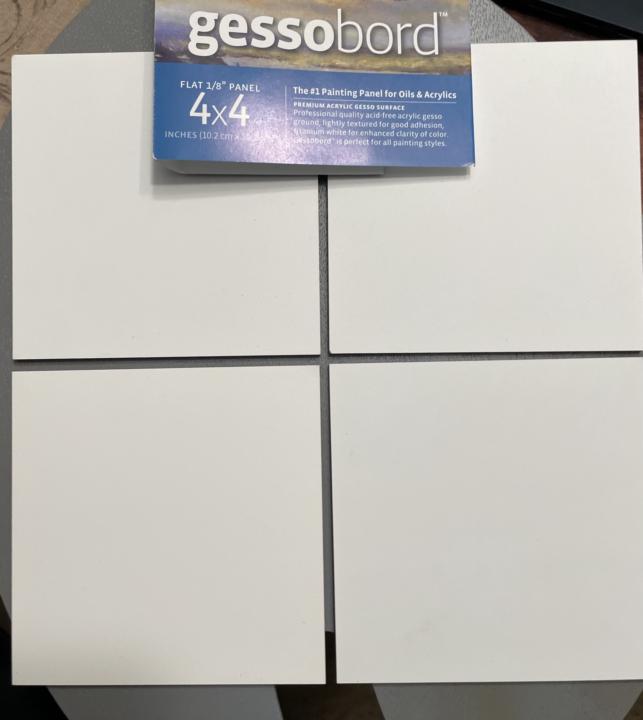
1 like • Oct 25
@Elissa MoraNot yet — I’ll be traveling soon, so I haven’t had the chance. But I’ve been researching ways to improve my process and came across the ébauche method (French for ‘first pass’ or ‘quick sketch’) by Steve Forster. It starts with a charcoal or graphite drawing focused on outlines, contrast, and accurate proportions, followed by sealing it with a fixative. The final — and longest — stage is painting with mostly transparent pigments in the beginning. Then followed by gradually building up the layers to completion. I’ve seen some portrait painters from the TV series Portrait Artist of the Year (a competition where thousands of artists compete for the title) use this technique but it didn’t really sink in until I came across this book Painting Luminous Portraits for Artists by Steve Forster. I attached an example of the painting stages from the book showing how it is applied and also a screenshot of the book cover. I find it really interesting.
Oil Portrait Study
This is my second oil portrait study, where I focused on exploring brushwork, refining values, and capturing just enough likeness without getting lost in detail. With each layer, I learn a bit more about restraint, rhythm, and how emotion can emerge from the simplest interplay of light and shadow. Still learning — and still enjoying the process.
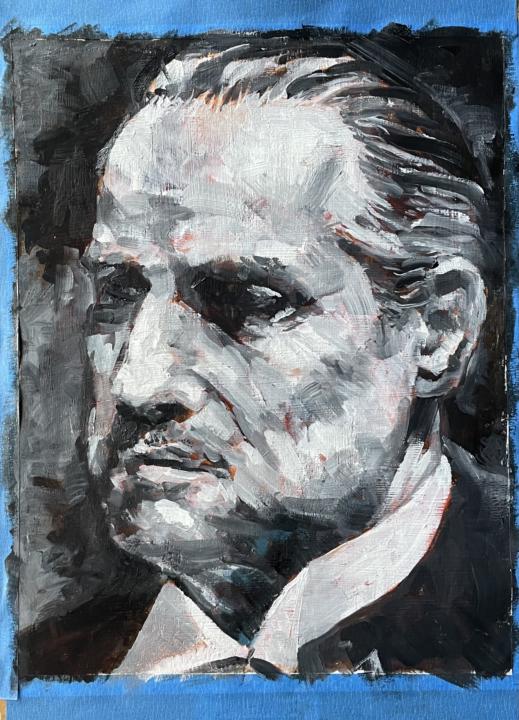
Getting into the flow state
Let’s see how much more I change . I really enjoyed playing with the palette knives and silicone brushes .

Work in Progress
A work in progress — a monochrome study of Don Vito Corleone. I’m exploring the tension between abstraction and realism, where form begins to dissolve but the presence remains unmistakable. This piece isn’t meant to be an exact copy, but my own interpretation — a way to express the quiet gravity and enduring power that linger beyond the likeness itself. Am I making progress?
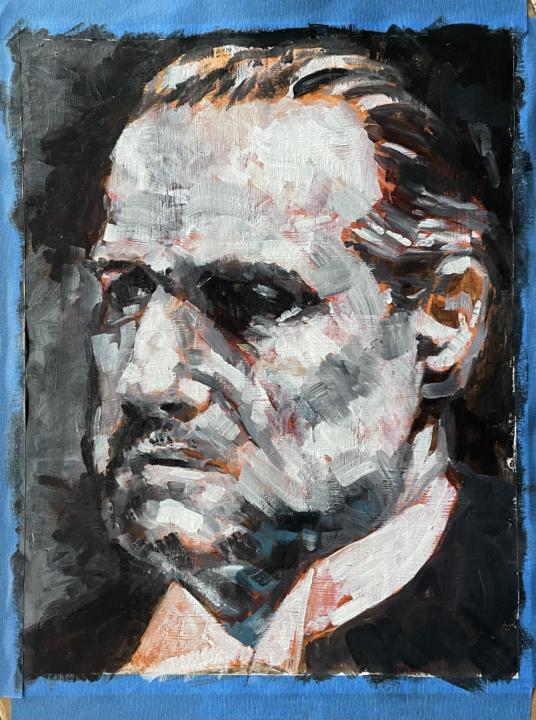
Finding My Way in Color Mixing
My biggest challenge right now is color mixing. I understand the general concept and truly enjoy the process, but I often feel unsure if I’m heading in the right direction. I recently read an article by Florent Farges about a color mixing exercise that stuck with me. He suggests first finding the pigment (hue) closest to your target color (the tone), then choosing a weaker one to complement it (the base). The tinting ratio he recommends is roughly 60% base, 30% tone, and 10% nuance. It makes sense in theory—but putting it into practice is a whole different story! I end up circling back and forth, asking myself - should continue with this one or start an a new one?
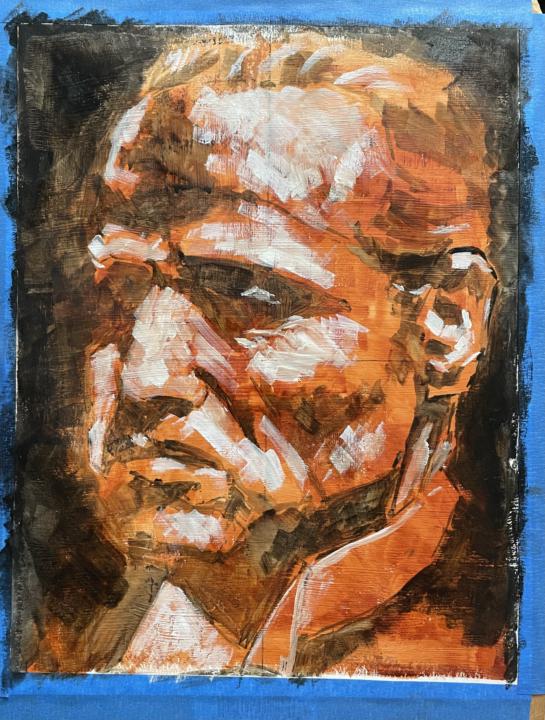
1-10 of 28
@edwin-caniete-1328
Portrait artist and photographer capturing character and expression in pencil, charcoal, and natural or studio light.
Active 11h ago
Joined Aug 27, 2025

